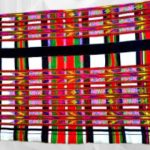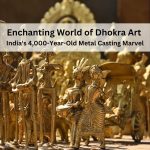
The weaving of puanchei is a laborious process that involves great skill and patience. The shawl is typically made from cotton, but recently synthetic yarns are also used. The cotton yarn is dyed in vibrant colors using natural dyes derived from plants, fruits, and flowers. Puanchei is traditionally woven on loin loom. The weavers inserts the designs and motifs during the woven process.




